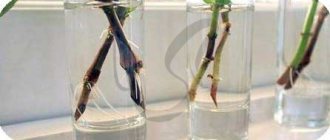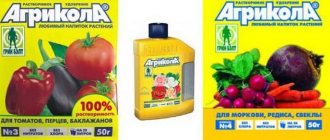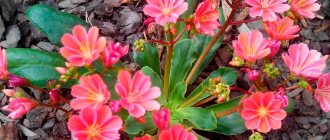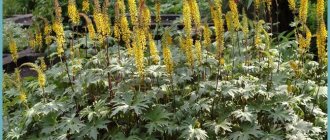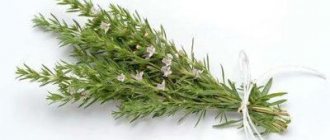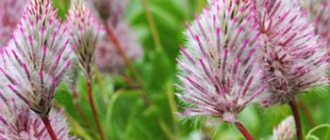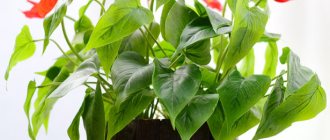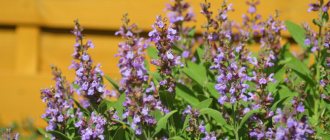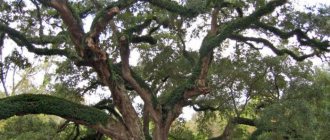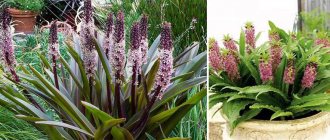A bright, colorful summer passes, many plants fade, and gradually autumn colors fill our gardens and parks.
How I want to preserve the beauty of the flowers and smells of summer longer, and preserve the memory of it for a long winter! Arrangement of dried flowers
Dried flowers will help us with this - plants that retain their shape, color, and sometimes aroma well for a long time. Bouquets or compositions made from them will decorate the room and will remind you of summer.
The range of dried flower plants is very large. You can see many of them in nature and collect the necessary material in the forest, field, or river. Others can be grown in your garden, and in the summer they will decorate your site, and in the winter, bouquets of them will refresh your home. Today we will talk specifically about those dried flower plants that are grown in the garden.
Dried flowers in the garden. Photo from the site landas.ru Immortelle flowers or immortelle. This is the name given to plants whose flowers have very hard petals. When dry, they retain their color and shape. This group includes various plants, most of them belong to the Asteraceae family.
Ads by
Helichrysum
Helichrysum is native to Australia and Africa; we grow the Helichrysum bracteatum species as an annual crop.
Usually its large-flowered form is grown, which is called large helichrysum (H. monstrosum). This is a variety with baskets up to 6 cm in diameter and many involucre leaves, making the flowers especially double. Helichrysum flowers
Plants from 40 to 100 cm in height with strong stems, form inflorescences-baskets of various colors. The following varieties are available: 'Fireball', 'White', 'Yellow', 'Scarlet', 'Lotos', ' Ogonyok', one of the tallest - 'Royal size', grows up to 1 m. Among the short ones, interesting are 'Leteum' ('Luteum'), 'Hot Bikini' ('Hot Bikini'), 'Moreska' ('Moreska'), 'Chico Red', 'Pink Porcelain'.
Other types of helichrysum are also used in floriculture: g. daisy-shaped, g. Milford, g. helmet-shaped.
You can select the seeds of this plant in our market by following the link.
Helichrysum Low-growing mixture 20 rub.
Agrofirm Search
Helichrysum Silver Rose (All year round) 17 rub.
Russian Vegetable Garden
Helichrysum Terry mixture of colors 20 RUR
Agrofirm Search
Helichrysum Royal size red 20 RUR
Agrofirm Search
Helipterum (acroclinum)
The most popular are pink helipterum (Helipterum roseum) or pink acroclinum (Acroclinium roseum).
An annual plant native to the southwestern parts of Australia, up to 50 cm high. It forms a rosette of leaves, from which stems extend, occasionally branching. Helipterum. Photo from ogorod.ru
Inflorescences-baskets up to 4 cm in diameter are formed by yellow tubular flowers and a wrapper of hard white or pink scales - they give the flower a decorative appearance. Flowering is short but abundant.
It has a large-flowered form with pink-red inflorescences. Known varieties are 'Red Bonnie', 'Album', 'Roseum', 'Yellow Stars', 'Bright Suns', and mixtures of colors, including a mixture 'Bonnie' ('Bonnie').
Ammobium
Winged ammobium (Ammobium alatum) is native to Australia.
In our climate, this is an annual plant up to 60 cm high, highly branched. Small inflorescences-baskets up to 1.5 cm with a yellow center and white dry petals (actually these are wrapper leaves) are very decorative. Ammobium. Photo from alchetron.com
Flowering is long (from June to frost) and abundant. Beautiful in flower beds and as part of winter bouquets.
Xeranthemum
Xeranthemum annuum grows in the Mediterranean and southern Russia.
Strongly branched annual up to 60 cm high. Baskets of white-pink-lilac shades 3.5-4 cm in diameter. Blooms from mid-summer to autumn. There are double and semi-double forms and varieties: 'Rose', 'Violetpurple', 'Carmine', 'Cossack' (mixture). Xeranthemum
Anaphalis
The most common plant in the middle zone is the pearl anaphalis (Anaphalis margaritacea).
This is a perennial plant, the stems are up to 45 cm high and the narrow leaves are covered with pubescence, making the whole plant appear silvery. Small baskets (up to 0.8 cm) of white-silver flowers are collected in corymic inflorescences. The plant is frost-resistant and can spread very quickly. Anaphalis. Photo from the site moj-zvetnik.ru
Gomphrena
The most commonly used plant is Gomphrena globosa, a plant from the Amaranthaceae family.
It comes from the tropical regions of America and is grown here as an annual. The plant is formed by highly branched shoots up to 35 cm tall. Small flowers, painted white and pink-purple, are collected in a round or oval inflorescence 3-4 cm in diameter. Gomphrena
Available in 'High', 'Strawberry', 'Pom-Pom', 'Bright Border', 'Pixie Mix', Gnome Series, 'Buddy White' White'), 'Buddy Purple'.
You can find seed material for growing gomphrena in our market.
Gomphrena Quis, Mix, 20 pcs. 59 RUR
seedspost.ru
Gomphrena Berry Glade, mixture 20 rub.
Russian Vegetable Garden
Gomphrena Purple, 20 pcs. 45 rub.
seedspost.ru
SeDeK Gomphrena seeds SeDeK Pompom ball 0.1 g 15 RUR
OBI
Helichrysum
The birthplace of the flower is Africa and Australia. In our latitudes, the annual crop Helichrysum bracteatum or helichrysum bracteatum is grown. The most common variety is the one with large flowers. The basket grows up to 6 cm in diameter. The petals have multiple involucres. Thanks to this feature, helichrysum looks soft and velvety.
Helichrysum
The stems are strong. They grow from 40 cm to 1 meter. The inflorescence baskets have different colors. The variety is represented by the following varieties: White, Fireball, Yellow, Lotus, Scarlet, Ogonyok. The largest is considered “King size”. It reaches a height of one meter. The short ones include: Hot Bikini, Luteum, Moresca, Chico Red, Pink Porcelain. Helichrysum helmet-shaped, daisy-shaped and Milford are also popular among gardeners.
Dried flowers - annuals
Amaranth
This name unites over 90 plant species. Translated from Greek, amaranth means “a flower that does not fade.” Florists are interested in small flowers collected in original clusters.
The dark purples and browns of amaranth are very picturesque. They bring pleasant harmony to any winter composition or bouquet.
Amaranth inflorescences are an excellent raw material for drying. A part of the plant of the required length is cut.
The stem is freed from leaves and hung in a dry, dark place with the inflorescences facing down. Amaranth takes a very long time to dry. It is necessary to monitor the process and ventilate the room if necessary.
Important! The finished composition with dried flowers is placed away from sunlight - otherwise the bright palette will quickly fade and fade.
Ammobium winged
The name of the plant is associated with its natural habitat. Translation from Greek - “lives in the sand.”
It is a perennial plant cultivated by gardeners as an annual. Florists are attracted to the dry white or yellowish petals of the wrapper. It is practically not used for landscaping purposes, but is often planted as a cut flower as a wonderful dried flower.
The phase of collecting material is determined by the florist independently. So, to replenish the collection with exclusively white flowers, the shoot is cut off at the moment the yellow center appears on the first inflorescence.
If you are more interested in sunny colors, you need to cut the stem when the flowers open on 4-5 inflorescences.
Important! With late cutting (full opening of the buds), the decorative effect of dried flowers is lost.
The stems are tied into small bunches and hung to dry in a shaded, well-ventilated area.
You must be prepared for the fact that the yellow center of the ammobium will change color to brown without special measures. Experienced florists know that you can bleach the center with sulfur vapor. This substance will return the center not only to its original appearance, but also give the petals a special brilliant snow-white color.
Helichrysum bractae
It is a herbaceous perennial grown as an annual. The dried flowers are interesting with their bright little “chrysanthemums”. The color palette is extensive: white, milky, scarlet, orange and pink. The bushes are neat, spreading, up to 60-80 cm high. Helichrysum bract is incredibly drought-resistant. This quality allows the immortelle to retain its shape and color forever.
It is more correct to cut helichrysum for drying at a time when the outer 3-4 rows of leaves have separated from the bud, and the rest still reliably hide the middle. When dry, 2/3 of the petals will continue to open, but the middle will remain slightly covered. Such a flower in the composition will look most attractive.
If the moment is missed and the center of the inflorescence is already visible, then it is more correct to leave the helichrysum for ripening and collecting planting material (seeds). When drying such a flower, the leaves of the wrapper will be strongly bent towards the peduncle, which will give an unpresentable result.
Low-grade helichrysum produces a huge amount of cuttings - tiny buds on short peduncles. They are used in the design of panels, artificial bonsai and other compositions.
Helichrysum is dried by hanging in sparse bunches indoors. Before drying, most of the leaves are removed from the stem.
Helipterum pink
The annual plant is characterized by a dry, weakly branching stem up to 50 cm high and colorful pink inflorescences-baskets. Flowering is abundant and short-lived.
The plant is indispensable when decorating winter bouquets. Helipterum is cut within 2 days after the first inflorescence blooms. In the future, it is better to refuse to collect material for drying. Fresh flowers are very beautiful, but unattractive as dried flowers. The appearance of the petals bent towards the stem is not decorative.
Xeranthemum annual
This plant literally means “dried flower” in Greek. The herbaceous annual attracts the attention of gardeners with its white, purple and pink small flowers. The multi-row wrapper is rigid and holds its shape and color well. One gets the impression that unique nature was able to revive an artificial flower.
Xeranthemum is often called immortelle. For drying, cut off the stems with half-opened baskets. The bunches are hung in a dry room.
On a note! If freshly cut inflorescences are placed in a solution of hydrochloric acid (in a ratio of 1x12) for 2-3 seconds, and then dried in the usual way, the dried flowers will turn out much brighter and more attractive!
Notched Kermek (statice)
Individual representatives of the Kermek genus are valued for their unfading blue or bluish purple calyxes.
Dried flower is a perennial cultivated as an annual. Flowers no more than 1 cm in diameter are located on spikes collected in corymbose inflorescences.
Statice is widely used in the design of dry bouquets. Fully blossomed flower stalks are cut off and dried in bunches suspended on trellises in a shaded room. In the sun, the stems change color and turn pale, losing their decorative effect. The blue and yellow palette of petals, on the contrary, is resistant to fading.
On a note! A frozen plant is prone to shedding. Not suitable for drying or using in winter bouquets!
Craspedia globulus
The original dried flower for floristry looks like a ping-pong ball. The annual plant reaches a height of 70 cm. The diameter of the yellow spherical inflorescences varies between 2.5 - 3 cm.
When the caspedia inflorescences dry, they become incredibly durable. If it hits a hard surface, the plant is not damaged and maintains its shape. Florists jokingly call dried flowers “drumsticks.”
Caspedia is cut at the moment of full flowering and dried in the usual way with the inflorescences facing down.
Interesting! It is believed that the abundance of dried flowers in the house displaces the energy of the owners! It’s worth listening to your feelings and sensations!
Setaria
Florists know another beautiful plant - dried flowers, which are divided into 2 subspecies: mogar and chumiza. Both annuals are representatives of setaria.
Mogar has a dense, cylindrical inflorescence that is quite fluffy. The inflorescence contains bristles of deep purple, brown, yellowish or greenish color.
Chumiza is distinguished by a longer panicle, which beautifully bends towards the ground. Both fluffy setaria inflorescences are good material for dry bouquets.
Safflower dyeing
The name of the dried flower is translated from Arabic as “to paint.” And all thanks to the presence of the pigment cartamine in the flowers. When dissolved in water, the substance turns it yellow, while alcohol turns it red.
Ammobium
The homeland of this variety is Australia. Known as winged ammobium. Our climate allows the annual to reach a height of 60 centimeters. The inflorescence baskets are small, 1.5 cm in size. The wrapper leaves resemble petals. They are dry white with a yellow center. They have a decorative appearance.
Ammobium
The variety produces abundant flowering. It begins in June and ends with the first frost. Looks beautiful as part of winter bouquets and in a flower bed.
Annual dried flowers
It has always been believed that the definition of dried flowers means annuals. This category can even include other definitions: “true dried flowers” or “immortelle flowers”.
If we talk about the plants themselves, then from this category the following are used to form bouquets and in landscape design:
- Helichrysum;
- Helipterum;
- Rodanthe;
- Xeranthemum;
- Kermek.
Helichrysum
Helichrysum
This plant confidently holds the lead in popularity from this subgroup. This is quite natural, since Helichrysum has the greatest variety of color palettes. Today, every landowner can purchase this plant with this color:
- red;
- white;
- yellow;
- orange;
- pink;
- and even raspberry.
The height of Gelchrysum can vary from 25 to 80 centimeters.
Helipterum
Abundant flowering of Helipterum roseum
This variety of dried flowers is not much different from the previous Helichrysum. But the slight difference is that they have a clearly visible middle: yellow or dark.
Helipterum itself includes one advantage: it fits perfectly into any bouquet.
If we talk about its use in landscape design, then it can often be found in rockeries and rock gardens. The height of its bush does not exceed 45 centimeters.
Xeranthemum
Xeranthemum
This variety of annual dried flower is completely identical to the above varieties, both in shape and color.
However, there is still a slight difference: their double inflorescences are stiffer than others, and the petals themselves are longer.
Care and cultivation
Annual dried flowers require the same care, regardless of their variety.
In the process of growing them, they must be fed with mullein or rabbit manure. This is primarily necessary in order to obtain excellent inflorescences when creating landscape design or in bouquets.
If we talk about the cultivation itself, the seeds of annuals are sown immediately in open ground. However, there is a small nuance. It concerns low-growing dried flowers - it would be better to grow them using seedlings.
To do this, you must initially plant them either in a wooden box or in pots, and after they grow to about 15 centimeters, transplant them into open ground.
When sprouting or transplanting into the ground, it is necessary to regularly hill them around the trunk. If the ground is hard, it can harm them, and they will simply dry out or wither.
In landscape design you can see what they look like:
Any dried flowers look great in rockeries
Dried flowers can also successfully complement any brighter annuals or perennials.
Curtains of helichrysums as the only bright accent
Xeranthemum
It first appeared in the Mediterranean and southern Russia. It is called Xeranthemum annual and is highly branched. It reaches a height of 60 centimeters. Baskets grow up to 4 cm in diameter. They can be pink, white and purple. There are semi-double and double varieties. The most popular of them are: Violet Purple, Carmine, Rose and Cossack flower mixture.
Xeranthemum
Rules for collecting and storing dried flowers
Immortelle should be harvested during flowering. Usually the plant is pulled out of the soil along with the roots. It should be dried in the attic under an iron roof or under awnings, scattered on paper or fabric. The layer of grass should not be more than five to seven centimeters. It must be stirred regularly. It is very important that there is good ventilation in the place where dried flowers are dried.
Dried dried annual flowers should be packaged in small bags and stored in a ventilated area for no more than three years.
Anaphalis
Pearl anafalis is found in the middle zone. Has narrow leaves. The stems reach a height of 45 centimeters. Completely covered in down. This creates the effect of a silver veil. The baskets are small, up to 8 millimeters. Silvery-white flowers are arranged in corymbs-inflorescences. Anaphalis spreads quickly. Cold-resistant. Continues to bloom even with light frosts. The plant is perennial.
Anaphalis
Gomphrena
Gomphrena globulus is used as an ornamental plant. Belongs to the Amaranth family. The tropical part of America is considered its homeland. In our latitudes it grows as an annual. The shoots branch heavily. They reach a height of 35 cm. The flowers are small. Can be colored purple, pink or white. Together they form an oval or round inflorescence up to 4 centimeters in diameter.
Gomphrena
The following mixtures are common in our climate zone: Pompom, Strawberry, High, Bright Border, Pixie Mix, Gnome, Buddy White, Buddy Purple.
How to dry properly
Collecting material is half the battle. Now it needs to be dried properly. There are many ways to dehydrate plants.
The only general rule: in the light all dried flowers lose color, in the dark they retain
Florists have a secret: to completely discolor the plants, moisten them with water every other day, but always with a fine spray. Then the prepared semi-finished products are painted with paints and varnishes.
We described one of the preservation options - drying in glycerin - in detail in a special article; we will consider other methods.
Air drying
Natural drying is suitable for most plants, especially herbs, grains and branches with leaves. The main condition is good air circulation during drying and storage. The best option is an outdoor canopy or a ventilated room. There are also a number of rules that will help not spoil natural material:
- should be dried in small bunches;
- hang the bunches with the flower heads down, with the exception of craspedia and similar plants with a rigid stem;
- avoid exposure to direct sunlight - this destroys chlorophyll, making the petals and leaves limp and wrinkled;
- temperature range – from 10 to 20 °C;
- the room must be clean, otherwise dust will settle on the dried flowers and ruin their appearance;
- the presence of moisture in the air will cause the plants to rot.
You can dry natural material in the sun that is not afraid of losing color: roots, branches, seeds.
Drying procedure:
- Stretch wire or rope between trees or walls and hang hooks.
- Large flowers - peony, rose, hydrangea - one at a time.
- Tie the herbs into small bunches, loosely tied with thread, so as not to spoil the shape of the stem.
- Distribute the distance for free airflow and so that the plants do not touch each other - then they will not break when drying.
- Store prepared dried flowers in spacious boxes.
Instead of hanging cereals and wildflowers, you can place them in a vase without water - this way they will dry naturally and retain their shape.
Dehumidifiers
The following are used as a dehydrant: silica gel, sand, semolina or fine corn flour, borax. Their advantages: high drying speed, color and even aroma retention are better than with other methods.
But there is a danger of overdrying the flowers and then they will become fragile, so you should first thread a wire into the stem - this will prevent breakage
The essence of the process: evenly pour a layer of desiccant into a cardboard box, place the plants at a short distance and completely cover them. Shake slightly to fill the voids, and use a soft brush to distribute the granules over the petals. Cover tightly to prevent moisture from the air from interfering with the dehydration process. After drying is complete, make holes in the bottom of the box and carefully pour in the desiccant, and sweep away the remaining grains with a soft brush. You can store dried flowers in the same boxes.
Let's look at the features:
- Silica gel . To dehydrate, you need to use a brand of desiccant specifically designed for flowers. Before reuse, separate the granules from plant debris and dry in the oven.
- Semolina or corn grits are used for delicate flowers of soft colors, for example, roses, carnations, chrysanthemums, peonies.
- The sand should be fine river sand; before the first use, wash it, sift it and bake it in the oven, and before subsequent uses it is enough to remove any debris and dry it.
- Borax , burnt alum are chemical desiccants; they will draw moisture from the petals, but will not allow them to wrinkle. The drying process for chamomile will take 1-2 days, and lilies can be in powder for up to 20 days.
Advice. To process large flowers such as roses or peonies, you can take a mixture of 1 part silica gel or borax with 2 parts sand - this way the material will penetrate between the petals and the process will proceed evenly. Processing time – up to 5 days
Silica gel is weightless, so you can lay flowers in several layers
Another way is to dry delicate flowers using cotton wool . The stems with flower stalks are inserted vertically into the slots in the cardboard so that the buds remain on top and the stems hang down below. The second installation option is in boxes on stands. The voids are carefully filled with cotton wool, and to prevent the plants from moving, they are wrapped in gauze, mesh and secured with threads. The process lasts at least two weeks. This method is suitable for harvesting chamomile, gladiolus, rudbeckia, poppy, and rose.
Important! The flowers should be fully bloomed, and choose a dry, sunny day; it is better to cut the stems in the afternoon
If there is no stem, then the flower head can simply be wrapped in cotton wool
Under pressure
Since herbarium drying produces flat flowers, this method is suitable as a material for panels or paintings. The first option is to place leaves, petals, herbs between sheets of cardboard, tie them with a rope or elastic band and put a press. If you use plywood instead of cardboard, then you need to additionally lay newspaper or filter paper.
After pressing, the flowers become completely flat
The second option is to use a metal or synthetic mesh stretched over wooden frames. In this case, you will also need a gasket in the form of sheets of paper. Such frames are fastened together and hung in a ventilated place for drying. The period, depending on the type of plant, is several days.
This press is suitable for harvesting a large number of plants.
Advice. The same effect can be obtained by ironing the plants: place them between two sheets of paper and warm them up, checking their readiness
Thermal methods
The oven is used for plants with a hard structure, for example, branches, pine cones, etc., since tender ones will shrink and may burn at high temperatures.
The method is simple: place on a baking sheet and leave to dry on low temperature with the door open.
In order not to overdry and spoil the decorative appearance, the process requires constant monitoring.
To avoid burning the petals, add a layer of salt to the bottom of the baking sheet.
The microwave dries quickly - in a few seconds or minutes. There are no clear rules, there are only recommendations:
- plants are placed between layers of parchment;
- power should be no more than 500 W;
- the flowers just need to be dried and then air dried to the end.
Herbs with a hard stem and small flowers, such as lavender or gypsophila, are excellent for drying in this way.
Advice. When drying with heat methods, first experiment with a small amount of material, and then, taking into account the shortcomings, you can process the entire batch
Yarrows
To create compositions and dry bouquets, two types of yarrow are used:
- Yarrow meadowsweet. One of the largest perennials. It reaches a height of 1.2 meters. The inflorescences-corythes are flat and dense. Painted in golden color. This gives the yarrow an elegant look. Flowering period from July to August.
- Yarrow ptarmika. It has a popular name - pearl mussel. The perennial plant has a creeping rhizome. The shoots reach a height of 80 centimeters. The baskets are pure white. Up to 1.5 cm in diameter. Decorated in loose shields. Blooms from July to August. This variety of yarrow is used for bouquets. With its help, they highlight other elements of the composition, and also create airiness and delicacy.
Dried flowers - perennials
Anaphalis pearly
The flowers are somewhat reminiscent of ammobium, but these are different dried flowers.
This is the most famous perennial among other types of anafalis. Florists like dried flowers for the unusual silver-ash color of the stems and flower baskets.
For drying, it is necessary to cut the plant when 2/3 of the inflorescences in the shield have opened. The shoots are tied into small bunches and hung above the ceiling in a dry place.
Dipsacus
The dried flower needs to be cut urgently, otherwise the rains will spoil it.
An interesting biennial plant, about 1 m tall. It is more popularly known as a pile cone. In the old days, thorny inflorescences were used to comb pile onto fabric; today, the “thorn” is used to decorate winter bouquets. Dried flowers are cut green, before they turn brown. The spines are removed immediately.
Gypsophila paniculata
A magnificent snow-white cloud in the garden.
This perennial reaches 1.2 m in height and is considered an indispensable dried flower for winter bouquets. The strongly branched stems form beautiful openwork spherical bushes.
White and pink flowers barely reach 0.5-0.6 cm in diameter, collected in paniculate inflorescences.
Drying the plant is easy. You need to place the bouquet in a vase with water (or an empty container). The drying process will take place on its own.
Common Mordovnik
Quite a popular component of floral arrangements.
The Greek name for dried flowers means a flower “like a hedgehog.” The spiny leaves of the involucre form a blue spherical inflorescence.
The perennial grows up to 1 m in height. Stems are slightly branched with slight pubescence.
Russian Mordovnik is able to retain the blue color of its flowers for a long time. This is one of the favorite dried flowers among florists.
Feverweed
A real miracle of nature - a cold immortal flower.
The name brings together over 250 species of perennials. All are distinguished by the presence of blue or blue small flowers located in the axils of lanceolate bracts. The round inflorescences are surrounded by hard and spiny involucre leaves.
Any eryngium is a classic component for a winter bouquet, and if you collect the dried flower at the peak of flowering, it will remain so for many years.
Gypsophila
The variety of gypsophila paniculata is especially loved by florists. Let's download another name. The perennial plant grows in the shape of a regular ball. It can be up to one meter in diameter. The bushes are airy and openwork. They consist of many thin branches, at the ends of which there are small white flowers. They can be terry and have a pink tint. Blooms July-August.
Gypsophila
The most common varieties: Snow Flakes, White Cloud, Flamingo, Carmen, Akulina, Mirage, Pink Star, Rosenschleier, Rosea.
Kermeki
This variety has 300 varieties. Common name: kermek. Found all over the planet. Another name for static. It is represented by both annuals and perennials. The grass has small flowers that are collected in panicles and corymbs. It also differs in a variety of colors: white, pink, blue, yellow, lilac.
Kermeki
Most species can be found in gardens. There are also those that have large flowers. These include: Heather Garden, Snow Fringe, Shimmer.
Cereals
Lagurus
Dried flowers include not only flowers, but also a number of cereals. Thus, one cannot fail to note the special charm of the white fluffy panicles (inflorescences) of lagurus. In the photo, the haretail looks more than attractive.
The fluffy grass is used in dry bouquets and winter compositions. The plant is cut to dry immediately after heading. If the moment is missed and the lagurus fades, the “tails” will be of a dirty shade. Can't fix anything.
To ensure that the cut material remains fresh and whitish in time, the dried flowers are dried in the sun.
Veynik
Any type of this cereal is quite decorative. Both wild and cultivated varieties look great in dry bouquets.
Large fluffy panicles of reed grass have a rich range of colors: greenish, cream, lilac, silver-pearl shades and others.
Reed grass is dried similarly to other grains, in a well-ventilated area with the panicles facing down.
Cereals
The well-known oats, wheat and rye are grains that have pronounced decorative properties.
For winter compositions, the ears are collected unripe. In order for the inflorescences with grains to take a natural “drooping” position, the grains are placed in a container without water.
Amaranths
Amaranth includes 90 species. You will only find four of them in the gardens. These are caudate, paniculate, tricolor and dark. Amaranths are large and tall. Inflorescences of different colors and shapes. The predominant colors are purple, burgundy, green and yellow. The dried version is stored for a long time.
Amaranths
Celosia
Celosia is native to India. Flower growers prefer two types:
- Comb celosia. Popularly called cockerels or scallops. This is due to the fact that the inflorescences are brightly colored and have a cockscomb-like appearance.
- Cirrus silvery celosia. It stands out for its bright panicle-shaped inflorescences.
Celosia
Mordovnik
Perennial. Grows from 80 cm to one meter. The stem is strong with feathery, spiny leaves. Florists use only one variety for compositions - the common moth. Inflorescences in the shape of a ball. They have a blue color. They grow up to 5 centimeters in diameter. Blooms in July. Popular varieties: Tarlow blue, Blue glow, Vechiz blue.
Mordovnik
Physalis
Physalis seeds are sown directly into the ground in a permanent place in April with a distance of 50-60 cm between plants. Physalis flowers bloom in July-August.
Physalis is traditionally valued for winter compositions, which it greatly decorates with its exotic “lanterns” of fiery red color.
Flowers are cut on a sunny summer day at lunchtime. Plants must be completely dry, without droplets of moisture after dew, rain or watering. Flowers are cut at the desired degree of blooming, with a fairly long stem. Having tied them into bunches, they are hung in dark, well-ventilated places with their heads down, after removing the leaves. Plants dry out in 15-20 days.
Bluehead
For winter bouquets, flat-leaved and alpine blueheads are used. The plants look impressive. The stem is tall and strong. The leaves are carved gray-blue. The inflorescences are capitate blue, fringed with spiny collars. Popular varieties: Blue Jackpot, Superboom, Blue Star, Amethyst, Slive Donard.
Bluehead
Cereals and onions
We are used to using onions exclusively for food. There are varieties that are considered decorative. Externally, they are distinguished by large spherical inflorescences of lilac, blue, and violet colors. They look unusual and impressive.
Cereals
Sorry, there are no surveys available at this time.
Ornamental grasses look good in bouquets. I use panicles of maned barley, reed grass, reeds, miscanthus, spikelets of pinnate bristle, haretail, breezes, foxtail and others.
How and when to collect dried flowers
Plants that are used to make bouquets of dried flowers can be divided into botanical groups:
- annual and perennial herbs;
- herbaceous or shrubby flowers;
- cereals;
- branches, leaves and fruits.
The harvesting period depends on the specific species, the general condition is that the plant must be in the desired vegetative phase. However, perennials such as ferns can be harvested throughout the summer.
In order for dried flowers to preserve their appearance and even aroma as much as possible, follow the rules:
- collect material only in dry weather;
- cut healthy plants without signs of wilting, disease or damage;
- the longer the shoot or stem, the easier it will be to dry the plant;
- After cutting, remove leaves and, if any, side branches.
This is interesting! All flowers and herbs must be dry before preservation, and only yarrow needs two days of soaking - this will preserve its color.
Yarrow pink
Cutting time depends on the growth cycle. Let's take a closer look at the procedure for harvesting plants.
Herbs
This is the most common type of plant for dried flowers. Only tough herbs are harvested, since their fibrous or tubular structure will not be damaged by dehydration.
Feather grass (maned barley) - its panicles are collected immediately after flowering
We list the most decorative types of dried flowers; photos and names will help you navigate.
Cotton
Cotton plant is better known as cotton. Popular everywhere, cotton sprigs are easiest to buy in flower shops. They are used mainly for arranging bouquets and weaving interior wreaths.
Bouquet of cotton, lavender and eucalyptus
Cotton is good on its own...
Photo from itallstartedwithpaint.com
...and in the company of other flowers, among which there are often dried flowers.
Bouquet of cotton and gypsophila
Bouquet of cotton and lavender
Unusual tableware will add a highlight to a cotton bouquet.
Cotton wreath (by DaisyMaeBelle)
Wreath made of cotton, pine cones, citrus fruits and cinnamon sticks
Small arrangements with candles can be decorated with soft cotton balls and other dried flowers:
Dried cotton is an excellent material for creating decorative compositions. Half-opened boxes with an airy white cloud inside will highlight the beauty of wildflowers or, on the contrary, will become the center of the composition.
In the center of the composition are cotton and lagurus (author - @dusha_shops)
Cotton is also good in wedding decor:
Groom's boutonnieres
Bridal bouquet www.stylemepretty.com
Wedding rings in a box with cotton
Banquet hall decoration
cat's paw
Antennaria or Cat's Paw blooms from mid-May to the end of July with buds collected in inflorescences of five - hence the name.
Cat's paw looks great in bouquets with other dried herbs. Inconspicuous flowers give bouquets of dried flowers a touch of vintage, as if they were collected a long time ago...
A few twigs and blades of grass in glass bottles make for a light and harmonious table decoration.
Antennaria in pink looks more impressive, both in bouquets and in street plantings.
Cat's paw in the bride's bouquet
Antennaria planted on an alpine hill
Mordovnik
Mordovnik from the Asteraceae family with a prickly stem and a beautiful ball of small flowers blooms from May to August.
He is good in bouquets and with living plants...
.. the same with other dried flowers:
Bright heads of Echinops enliven the flower arrangement
The color of Echinops is supported by lavender inflorescences
Wreaths using several heads of Echinops look even more interesting...
...or completely assembled from them:
Feverweed
The eryngium from the Umbellaceae family is similar to cornflower; its bright blue petals do not lose color after drying; they can be collected all summer long.
Due to its blue color, eryngium, along with Echinops, is often used when creating a groom’s boutonniere:
But the bridesmaids are not averse to wearing pendants with eryngium:
Eryngium flowers combine wonderfully with bright yellow craspedia flowers, as in miniature bouquets...
... and in luxurious compositions with fresh flowers and berries:
Craspedia
Craspedia comes from Australia - its original bright yellow balls on a rigid stem are grown in greenhouses, so they are collected as they bloom.
Craspedia looks good in minimalist interior compositions...
...and also in bouquets with lavender and cereals:
Positive yellow balls will enliven the image of the groom:
They will add color to the bride’s bouquets collected from fresh or dried flowers:
The bouquet is made of craspedia, cotton, skeletonized leaves, cereals and felt flowers
Craspedia is ideal for making bouquets with succulents, fresh flowers and even fruits:
Gypsophila
Kachim or gypsophila is a weed in rye crops, but in flower beds it acts as a ground cover, often acting as a companion in mixborders. It begins to bloom in June.
Most often, gypsophila branches act as an addition to the main flowers:
However, it also looks great in a duet, for example, with chamomile or lavender...
...and even solo!
Small compositions using gypsophila will be a wonderful interior decoration, just like on ordinary days...
...and on holidays:
Delicate Easter decor with gypsophila sprigs
Bride's bouquet of corrugated flowers and gypsophila
New Year's bouquet of pine cones and decoration above the fireplace using gypsophila
Another option for using this dried flower is jewelry made from epoxy resin:
Statice
Kermek, limonium, statice are the names of one plant whose lush panicles of small flowers retain their color even after drying. They bloom all summer.
The palette of Kermek flowers is very diverse:
However, monochrome bouquets are worthy of attention!
Floristry masters are not limited to making bouquets exclusively of flowers, adding fruits to them:
Weave wreaths using dried flowers and cones:
Arrangements of dried flowers, including lush statice flowers, can be incredibly delicate, like this wedding ring nest:
Glass flasks will store bouquets of dried flowers for as long as possible:
Lunnik
Another type of herbaceous plant, lunaria, forms pods with fruits, after ripening which thin pearl-colored partitions remain.
They need to be harvested in September, when the plant is already dry, so no additional techniques are required.
Onion and garlic
Umbrellas of onions and garlic look interesting in bouquets. For example, Aflatun onion:
A blooming spherical umbrella with small flowers is used as a dried flower. Since flowering occurs from May to June, and fruiting begins in August, florists have almost two months to prepare this decorative type of onion.
Breeders have developed varieties of onions of gigantic size, which certainly become the main characters of bouquets:
When dried, onion balls are not so impressive, but they can still act as a stylish piece of furniture:
Flowers
Lavender
The main favorite of florists is lavender. It is harvested during full flowering, usually in July. Fragrant sprigs of lavender add special comfort and aroma to the atmosphere of your home. You can grow lavender yourself in your garden plot and even on your balcony:
How to properly collect and dry lavender, watch the video of the Domostroy.ru
You can purchase ready-made bunches of lavender in aromatic shops and flower shops in already dried form:
Lavender bouquets look great in the interior!
Bouquet of lavender and eucalyptus
Bouquet of lavender and ears of wheat
Simple compositions of lavender and gypsophila
A thick bunch of lavender (photo from dreamcakeblog.wordpress.com)
Options for using lavender in table settings
Dried lavender flowers are good for making herbariums...
Author — Julivani
...and in the captivity of wreaths:
Wreath on a wooden base
Wreath on a wire frame
One of the most common ways to use dried lavender flowers is in aromas:
Natalia Kovaleva shows how to make a sachet from lavender and eucalyptus with your own hands:
Candles and soaps using lavender are no less popular:
Candle decor
Lavender soap
Lavender is also often added to epoxy resin jewelry:
Photo on the left by MARIAELA, on the right by Resin Crafts (original master class)
Dried lavender flowers are also used in cooking:
Hydrangea
Hydrangeas are a type of flowering shrub or even vine, so they can be dried in bunches in the air.
Collection is carried out throughout the summer and even in autumn, since the inflorescences need to be cut at the mature flower stage, when the petals become a little stiff.
Cut hydrangea branches must be placed in water - this is how the inflorescences gradually dry out
Hydrangea is good on its own...
... and as part of compositions with other dried flowers, berries, fruits, etc.:
Hydrangea flowers are also used to create DIY jewelry:
Cereals
Ears of cereals
Ornamental grasses add airiness to bouquets...
...and bread fills them with the meaning of fertility and wishes for a long life.
Dyed or natural ears of wheat are used as dried flowers:
Oats, buckwheat, rye, barley - harvested during the period of green ears or full ripening, but before shedding begins.
Lagurus (haretail)
Fluffy panicles of lagurus on stems almost a meter high can be collected from March to July.
Reed grass from the genus Poagrass, fragrant spikelet, and horse sorrel are collected starting in July.
Veynik
Horse sorrel
Branches, leaves and fruits
Physalis
For autumn and New Year's compositions, bright and originally colored physalis fruits are used.
This perennial plant, when the berries ripen, forms a shell reminiscent of a Chinese paper lantern of bright orange color.
Dry them in a vase or hanging them with the stem up.
Eucalyptus
Eucalyptus sprigs will decorate a bouquet of fresh flowers and subsequently serve as stylish interior decor:
Eucalyptus wreaths are quite easy to make:
The branches are wound to the wire using fishing line
Or glued to a wooden hoop
More interesting options for wreaths:
Ornamental shrubs
Ornamental shrubs, for example, rose hips, wild olive, laurel, hawthorn, rowan, must be cut as soon as the plant acquires the desired decorative appearance.
Unusual fruits
It stands out for its appearance as a lunaria. This biennial plant grows up to 60 centimeters. Fruits are used in floristry. They look like round pods with a diameter of about 3 cm and a transparent partition. They ripen in their second year by the end of summer. There are plants whose fruits look like boxes. They are added to bouquets and winter arrangements. For example, physalis has bright orange lanterns, and nigella has round green boxes with stripes.
After flowering, Siberian iris leaves dried oblong boxes of a brown hue. Instead of baskets, Echinacea produces prickly balls of achenes.
Such unique plants can be found in gardens in our latitudes. They are a decoration for flower beds and beds. They are also used for interior decoration. As winter dry bouquets and compositions.
Use in landscape design
Dried flowers are the most popular element of a rocky flower garden (rockery). They go well with various types of stone and do not require special care and are not capricious to growing conditions. For such a composition, you should not choose delicate and fragile varieties. Eryngium, brisa and other “prickly representatives” are best suited.
Flower beds with perennial or annual plants are colorfully diluted with bright, original types of dried flowers. They are able to compete with the most exquisite representatives of the flora. And the subtle elegant aroma adds a touch of romance and peace to the garden. Dried flowers often act as a background for annual plants. After they have bloomed, dried perennial flowers continue to decorate the garden with their appearance.
Low, lush dried flowers are planted along the paths as a living border. You can use lavender for this. It also helps in softly, unobtrusively dividing the area into the required number of zones. Refined and deep color goes well with many garden plantings. An easily recognizable spicy aroma completes the list of advantages.

